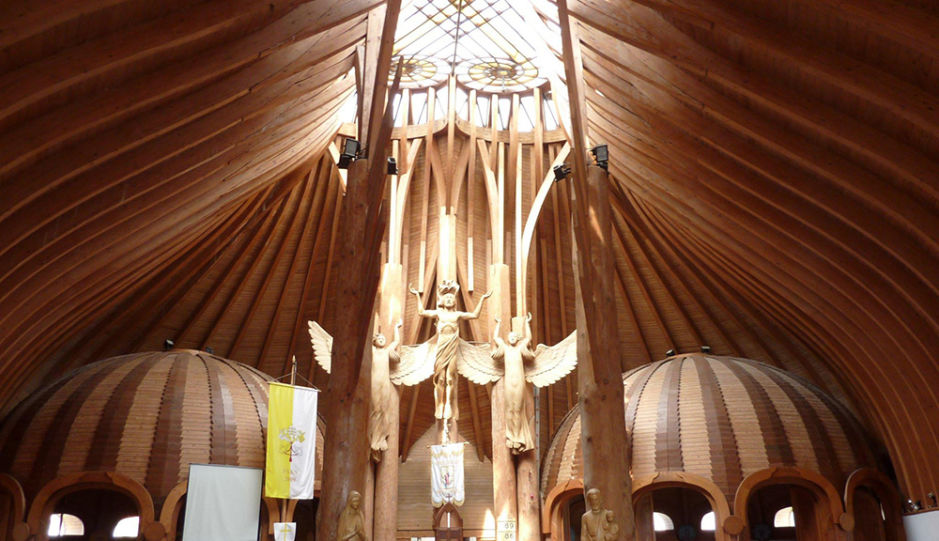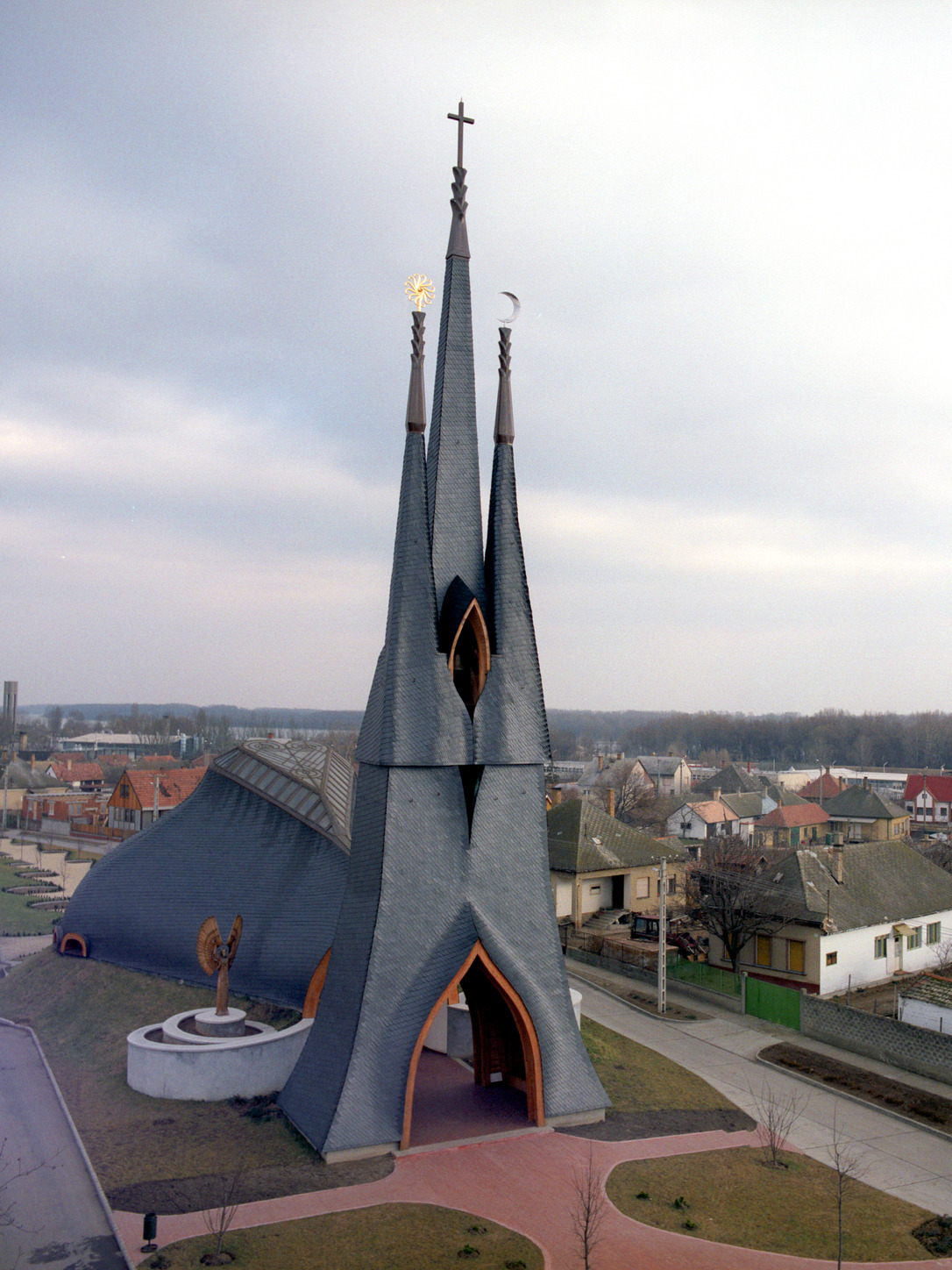Imre Makovecz’s Organism – Architectural Resistance against Socialist Realism – Paks, Church of the Holy Spirit
Fact of the Hungarian figure „Stephen, the King rock opera – National emotions in communism„
Part of the „Culture against communism„ topic
The Church of the Holy Spirit in Paks, designed by visionary Hungarian architect Imre Makovecz and completed in 1988, is a profound statement against the rigid confines of socialist realism. Situated in a small town along the Danube River, the church represents a bold departure from the uniformity and utilitarianism imposed by communist-era architectural mandates. Instead, it embraces an organic, human-centric design rooted in the traditions and spirituality of Central Europe.
Makovecz, a leading figure in the Hungarian organic architecture movement, envisioned buildings as living organisms, harmonizing with their natural and cultural surroundings. The Paks church, with its soaring wooden spires and undulating forms, evokes a deep connection to the sacred and the earth, challenging the regime’s secular materialism. Its symbolic design, inspired by the forms of Hungarian folk art and the region’s vernacular architecture, emphasizes community and resilience—values often suppressed under the communist system.
The church’s interior is equally striking, featuring natural light filtered through intricate windows and a ceiling that suggests the ribs of a protective, sheltering structure. This design not only reflects spiritual transcendence but also critiques the lifeless, mass-produced buildings prevalent in the Eastern Bloc. The craftsmanship involved, utilizing local materials and techniques, also reclaims Hungary’s architectural heritage, asserting a cultural identity distinct from the ideological conformity of the time.
Makovecz’s work in Paks resonated beyond Hungary, influencing architects across Central Europe, including Czech and Slovak practitioners, who similarly sought to revive national traditions within restrictive political contexts. His collaborations and exchanges with architects such as Dušan Jurkovič from Slovakia and Poland’s Witold Cęckiewicz strengthened a regional movement that celebrated humanistic and vernacular architecture as subtle acts of defiance.






